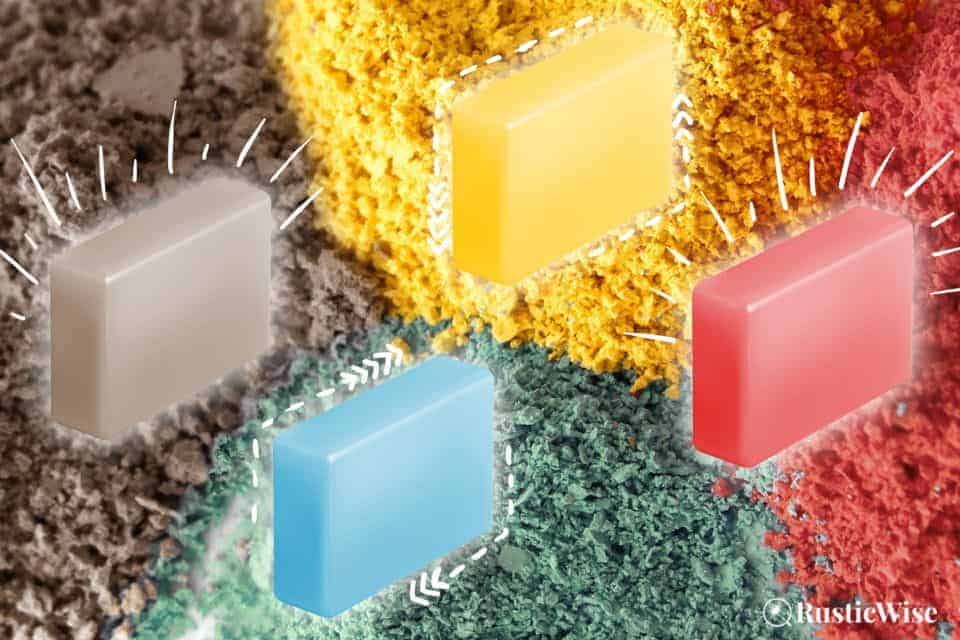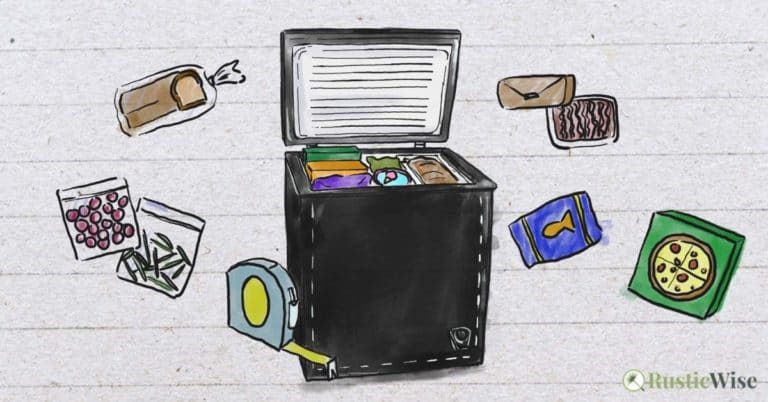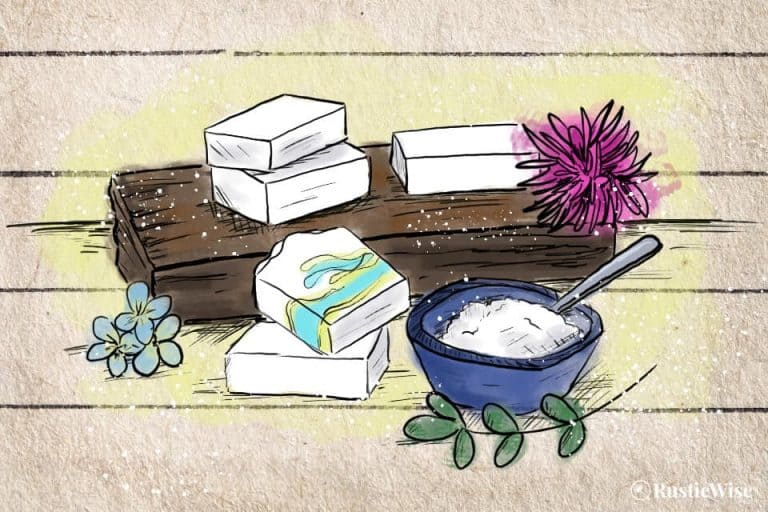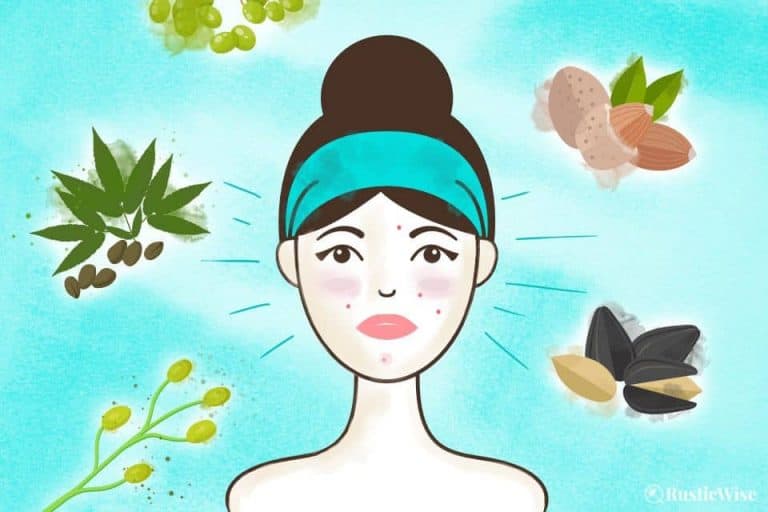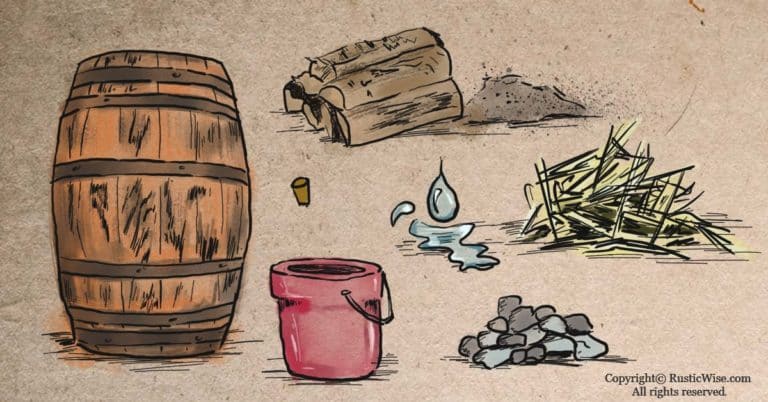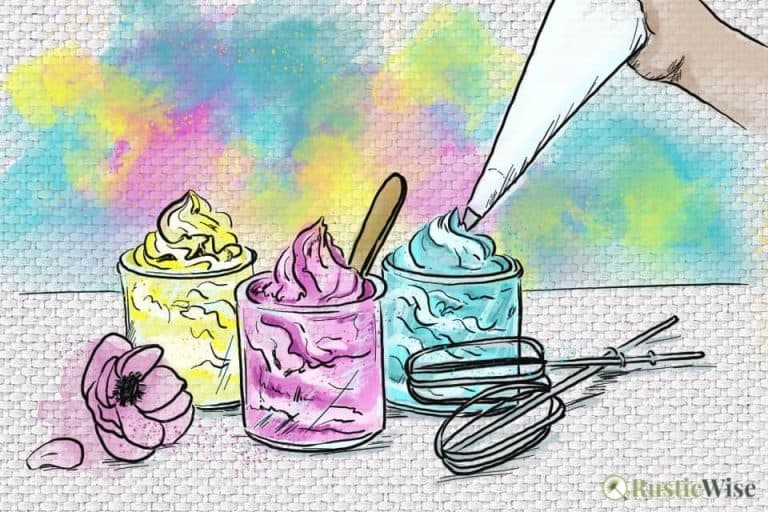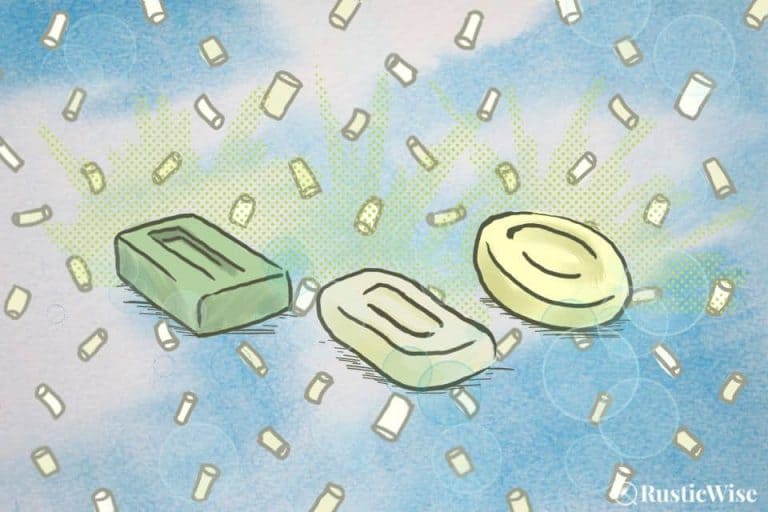Best Clays for Soap Making: Remove Impurities + Rejuvenate Skin
RusticWise is supported by its readers. When you purchase through links on our site, we may earn an affiliate commission. As an Amazon Associate, we earn from qualifying purchases. Thank You!
Clays for soap making are great natural additives that add color and skin cleansing properties to your batch of homemade soap. Clay colors can range from white to black with shades of the rainbow in between. While there are many types of natural cosmetic clays, a few popular varieties are bentonites, kaolin clays, French green, and Rhassoul clay.
Whether you’re looking to add a splash of color, or reap the benefits of clay’s skin nourishing qualities, we’ll look at some of the best clays to include in your soap recipe.
Each type of clay has unique properties, with some being more mild (kaolin) and others having strong oil absorbing properties (bentonites). So, it’s best to read up on which clay is best for your skin type.
Most soap makers who have tried clays love them! Read on to learn more about natural clays and how to add them to your handmade soap.
What exactly are clays?
Not quite like soil, and not exactly like mud or minerals, clays are their own unique natural compound.
Geologists define clay as, “…the term for the finest fraction of sediments that all consist of accumulations of different minerals (e.g., quartz, feldspar, carbonates, etc.) and organic matter.”¹
In other words, clay is a fine grained natural compound that contains many natural clay minerals.
Most clays you can buy for soap making are finely ground powder. When wet, they become moldable and spreadable, which is why clay facial masks are so popular.
Clays get their natural colorants from the unique rock and soil properties from which they’re mined from.
Benefits of clay on skin
Since ancient times, people have been using a variety of clays topically to enhance and purify the skin.¹
Clay is known for both its potent adsorptive and absorptive properties.
Simply put, adsorption occurs when particles come together or accumulate on a surface. (Think of a magnet which attracts impurities.)
Absorption occurs when a substance diffuses or permeates into another and forms a transition layer, usually with a new composition. (Think of how clay forms a mud-like consistency when mixed with water.)
Clay’s rare combination of adsorptive and absorptive characteristics makes it a rockstar in the skincare world (particularly if you have oily or acne prone skin).
In a nutshell, here are a few benefits of clay for your skin:
Did you know… Although cosmetic companies must substantiate the safety of products containing clay, the U.S. Food and Drug Agency doesn’t have a pre-approval process in place to oversee products. So do your due diligence and check the ingredients label.
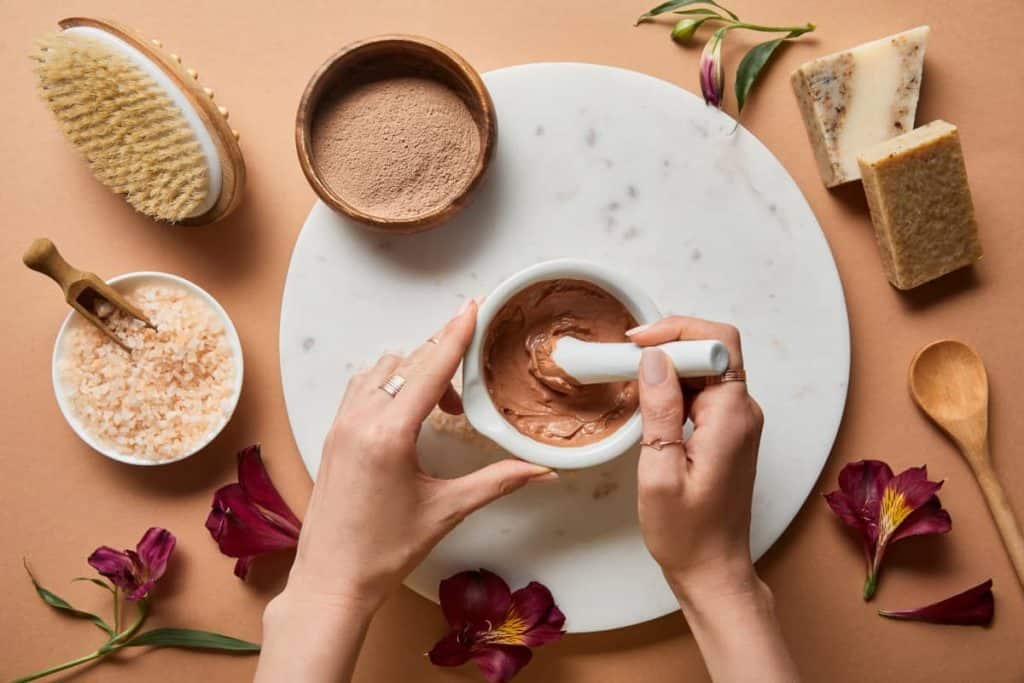
What are clays for soap making used for?
Add clay to your list of natural soap additives! Here are a few clay soap benefits.
Tip: Look for 100 percent pure cosmetic clays to add to your cold process soap.
List of cosmetic clays for soap making
The following is by no means a comprehensive list of clays. I’ve tried to include as many popular natural clays as I could, but I’m sure I’m missing a few.
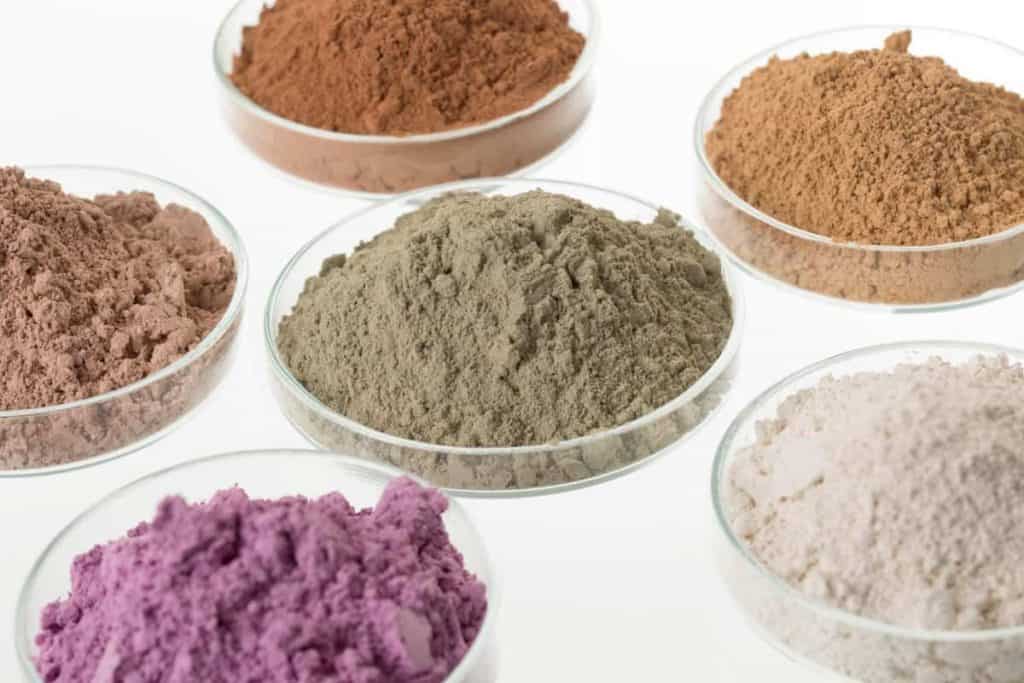
Kaolin clays and Brazilian clays
You’ll find a variety of different colored kaolin clays, but the OG clay is white. Kaolin is also known as China clay for its place of origin. It’s a soft clay that was commonly used to make fine china or porcelain. Kaolin is also an integral ingredient in the production of paper.²
The main mineral found in kaolin clay is kaolinite.
You may have heard soap makers talking about Brazilian clays. Brazilian clays are a type of kaolin clay found in Brazil and have vibrant colors.
Color: Kaolin clay is white. There are also other colors (see below).
Skin types: Kaolin is known as a mild clay that’s suitable for most skin types. If you have dry or sensitive skin, kaolin is a good choice to use in cold process soap, masks, or other skincare products as it doesn’t absorb as much oil from skin as other types of clays. Kaolin is also a great thickener.³
- Blush kaolin clay: Comes as a muted peach-pink hue, this variety contains a higher dose of iron minerals.
- Rose kaolin clay: Slightly brighter and more vibrant than blush kaolin, rose kaolin clay is popular for its lovely color. It’s as used as a thickening agent and to absorb excess oil.
- Slate kaolin clay: With a dark gray color, slate kaolin is chock full of iron, magnesium, and other skin nourishing minerals. It’s good for oily or sensitive skin and as a gentle exfoliant. It’s commonly used in shaving soaps and masks as it has a slightly coarser texture when wet.
- Brazilian clays: A type of kaolin clay found in Brazil, these clays are characterized by their bright hues. A popular one is Purple Brazilian Clay as there aren’t too many natural colorants that produce a purple soap. There are other colors too, including dark red and yellow.
Bentonites
Bentonite is a name for clays mined from volcanic ash beds. The ash develops and builds up from volcanic eruptions. You’ll find deposits of bentonite anywhere there have been volcanic eruptions.¹
Studies done on bentonite clay show that it works as a detoxifying agent; it has a “poly-cationic” property which means it’s able to absorb negative charge toxins.⁴
The largest producer of bentonite is Wyoming in the U.S., followed by Greece. It’s also found in other countries around the world, including Australia, China, India, and Italy.¹
Color: Off-white to beige.
Skin types: This soft clay is great for oily skin with its strong oil absorbing properties. Avoid using if you have very dry or sensitive skin.
French Green Clay
One of the most popular cosmetic clays originating from France, French green clays have been used for centuries to purify and rejuvenate skin. It’s widely coveted for its skin healing properties.
French clay goes by many names. It’s sometimes known as sea clay, or marine clay as it’s mined from marine beds. It also goes by Montmorillonite or Illite Clay.
With an abundance of natural skin-friendly minerals, French clay is a popular ingredient in facials masks, face bars, and other soaps. It deep cleans skin by absorbing any impurities, leaving skin feeling refreshed.
Color: Ranges from light mossy, gray-green to darker green.
Skin types: Great for oily or acne prone skin.
French clays also come in other colors including pink, red, and yellow.
Rhassoul clay
Rhassoul clay originates from Morocco where it, too, has been used for centuries by locals for skincare purposes. Rhassoul is a type of stevensite clay, one that’s rich in magnesium, potassium, and calcium.
Because of its gentle and detoxifying qualities, Rhassoul is great in bath soaks, masks, and soaps.
Color: Earthy, reddish-brown.
Skin types: Use for sensitive, oily, tired, or mature skin types. While it still has mild oil absorbing properties, it’s much gentler than other varieties of clays.
Fuller’s Earth clay
If you’re looking for a deeply absorbent clay, look no further than Fuller’s Earth clay. Because of its oil absorbing properties, you’ll find it commonly used in facial masks, facial scrubs, and facial soap bars.
Color: Ranges from a light tan or beige to earthy green color.
Skin types: Great for absorbing excess oil from oily, combination, or acne-prone skin.
You might like
3 Multipak Set: 8 oz Each, (Bentonite, Moroccan (Red Rhassoul), and Green (French-Sea) Clay Powder
- ALL-NATURAL CLAY: 100% all-natural cosmetic clay powder for making clay facial masks or for DIY skin care, hair, and body. No chemicals, no preservatives.
- COSMETIC CLAY POWDER: All clays are packaged in the U.S. Our Green and Bentonite clays are products of USA. The Rhassoul is from Morocco.
Found on Amazon
Check Current Price
Those in Canada and the UK should be taken to the product listing in your region.
How to add clays to cold process soap
As with most things in soap making, there’s more than one way to do things! Adding a dash of your favorite clay can spruce up a basic cold process recipe. If you’re planning to add clay to soap, you could add it to your lye solution, mix with your oils, or add at trace.
How much clay to add to cold process soap?
I would recommend starting off at 1 teaspoon of dry clay per pound of oil (16 ounces). You can add as much as 1 tablespoon per pound of oil.
Adding clay to your lye solution
If your soap is one color, you can add clay to lye water and mix well to avoid clumps. This gives the clay plenty of time to dissolve (and for you to see if you want to add more to brighten the color).
Adding clay to your soaping oils
Instead of adding to your lye mixture, some prefer to incorporate clay directly into the soap oils. Break out your stick blender to mix well.
Adding clay at trace
If you’re working with more than one color, you can add clay at thin trace and swirl/do your magic.
Before you add it to your soap mixture at trace, it’s best to mix the clay with distilled water first. Not mixing with water first might cause specks and clumps in the finished soap.
Tip: If mixing clay with water first, dissolve 1 teaspoon of clay in 1 tablespoon of distilled water.
How to add clays to hot process soap
The amount of clay to add to hot process soap is the same as cold process: 1 teaspoon of dry clay per pound of oil (16 ounces).
For best results for hot process soap, you can add clay directly to your lye solution to allow it to full dissolve.
If you add clay after the cook, sometimes you might get lumpy soap batter that’s hard to work with.
How to add clays to melt and pour soap
For melt and pour soap, use 1 teaspoon of dry clay per pound of soap base (16 ounces).
Mix with a bit of rubbing alcohol (isopropyl alcohol) first before adding to your soap base. Use 1 teaspoon of clay in 1 tablespoon of rubbing alcohol.
Or, you can mix your clay with a glycerin base you’ll be using in your recipe.
Tips for working with clays for soap making
New to making soap? 🧼❓
👉We have a fantastic overview on the whole soapmaking process here: read our Timeless Guide To Soapmaking.
If you would like to see our soapmaking posts organized by topic type, see our Soapmaking Collection.

References
- Williams, Lynda B, and Shelley E Haydel. “Evaluation of the medicinal use of clay minerals as antibacterial agents.” International geology review vol. 52,7/8 (2010): 745-770. doi:10.1080/00206811003679737 https://www.ncbi.nlm.nih.gov/pmc/articles/PMC2904249/
- Britannica, Kaolin, https://www.britannica.com/science/kaolin. Accessed December 2021.
- Wholesale Supplies Plus, Clays, https://www.wholesalesuppliesplus.com/additives/application/clay.aspx. Accessed December 2021.
- Moosavi, Maryam. “Bentonite Clay as a Natural Remedy: A Brief Review.” Iranian journal of public health vol. 46,9 (2017): 1176-1183. https://www.ncbi.nlm.nih.gov/pmc/articles/PMC5632318/

Author: Theresa Tesolin
Theresa is co-founder of RusticWise. She helps people unleash their inner DIY spirit by encouraging them to get dirty and make or grow something from scratch.

